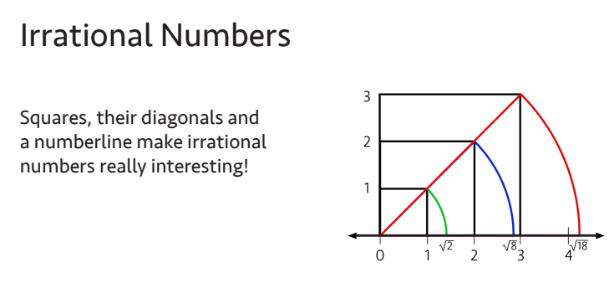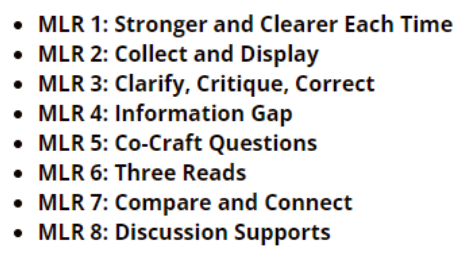Children are Sense-Makers

Children are constantly making sense of new information in relation to what they already know through daily problem solving. As sense-makers within families and communities, we know that every student is a thinker, knower and doer of mathematics. See WI Vision for Mathematics.
Teaching and learning that centers and joins the strengths of students of color and other students whose language, literacies, and lifeways are often systemically marginalized in schools, defines an asset-based pedagogy (Paris, Django, Equity by Design: On Educating Culturally Sustaining Teachers 2017, 1). Asset-based pedagogies ensure that student strengths are leveraged for learning by supporting teachers and students as they develop relationships with one another that disrupt deficit views. See GLEAM TM Instruction.
View the following video of Francis Su: Math Is for Everybody (01:22) to hear his views on how math helps everybody flourish.
Students with an IEP
“When students are given the freedom to think in ways that make sense to them, learning disabilities are no longer a barrier to mathematical achievement. These students do not have less mathematics potential and often they are students who think creatively and visually, have strong reasoning and logic, and who could contribute greatly to the discipline of mathematics" (Boaler and Lamar, There Is a Better Way to Teach Students with Learning Disabilities 2019). Notice the example of thinking about irrational numbers in a visual way from youcubed.org.

Learning, understanding, and knowing mathematics take on new meanings in a humanizing classroom, treating students with an IEP with dignity in their capacities to think and do mathematics. Humanizing the mathematics education of students with disabilities enhances the learning of all.
Individual Education Plans (IEPs) can be used as powerful tools for access, equity, and inclusivity; for using funds of knowledge and of identity to navigate the education system; and of building inclusive classrooms and communities (Tan, et al, Humanizing Disability in Mathematics Education 2019).
For more information about humanizing mathematics education, click here to read an excerpt from National Council of Teachers of Mathematics’ text, Humanizing Disability in Mathematics Education: Forging New Paths.
![]() Listen to a National Council of Supervisors of Mathematics (NCSM) podcast with Rachel Lambert as she shares her thoughts on math leaders’ call to action to leverage meaningful mathematics: #DeleteDeficitThinking: How changing beliefs can transform our mathematics classrooms. Rachel Lambert’s work investigates the intersection between disability studies in education and mathematics education.
Listen to a National Council of Supervisors of Mathematics (NCSM) podcast with Rachel Lambert as she shares her thoughts on math leaders’ call to action to leverage meaningful mathematics: #DeleteDeficitThinking: How changing beliefs can transform our mathematics classrooms. Rachel Lambert’s work investigates the intersection between disability studies in education and mathematics education.
Visit the DPI Special Education webpage for additional information.
Multilingual Students

Multilingual learners’ languages and cultures are valuable resources to be leveraged for schooling and classroom life; leveraging these assets and challenging biases help develop multilingual learners’ independence and encourage their agency in learning (WIDA Guiding Principles of Language Development 2019).
A 2021 joint position statement from NCSM: Leadership in Mathematics Education and TODOS: Mathematics for ALL describes prioritizing policies and practices that position multilingual learners so that they can access, engage, and thrive in mathematics education.
High-quality standards-aligned instructional materials, such as Illustrative Mathematics (IM), build their materials on instructional routines and practices that can and should be used to support all students learning mathematics. For examples of evidence-based mathematical language routines outside of a set of instructional materials, go to Understanding Language/SCALE from Stanford University which goes deeper into the routines used in IM or go to Achieve the Core’s Mathematical Routines.

“Multilingual learners deserve the same social and academic opportunities to learn and be successful as their English-speaking peers. All students should learn how to interpret the meaning of problems, make conjectures, analyze mathematical thinking and solutions, monitor and evaluate their progress, and understand the approaches of others in comparison with their own. Teachers must facilitate access, participation, and success for multilingual learners. To do this effectively, they must recognize that multilingual learners require opportunities to learn content while simultaneously developing a new language” (Chval, Teaching Math to Multilingual Students - Positioning English Learners For Success 2021, xv).
![]() Watch Positioning Multilingual Learners for Success in Elementary Mathematics, a webinar from National Council of Teachers of Mathematics, in which specific strategies are shared that celebrate multilingual learners’ brilliance while facilitating access, engagement and inclusion in the mathematics classroom.
Watch Positioning Multilingual Learners for Success in Elementary Mathematics, a webinar from National Council of Teachers of Mathematics, in which specific strategies are shared that celebrate multilingual learners’ brilliance while facilitating access, engagement and inclusion in the mathematics classroom.
![]()
Read “Everybody Wants to Be Seen”: A Conversation with Mathematician Georgina Rivera to learn how centering student experiences matters for ensuring mathematics learning is accessible to all.
Mathematics Content Standards and English Language Development Standards
The 2020 WIDA English Language Development Standards Framework adopted by the state of Wisconsin in May, 2021 emphasizes that multilingual students are best served when content and language are taught together in culturally and sustaining ways (WIDA, 2020).
The ESSA (Section 1111 (b)(1)(F) requires that English Language Development Standards be implemented and aligned with the state’s academic content standards in every LEA that enrolls English learners in the state. The DPI Language Instruction Education Program (LIEP) crosswalk outlines which standards would be required within each of the LEA’s chosen program model(s). LEA’s are encouraged to consider how the WIDA 2020 framework can be brought together not only in support of multilingual learners, but also in how we grow and support the academic language development of all students.
WIDA 2020 English Language Development Standards Framework applies to Mathematics in the following ways and can be found at the DPI English Language Development Standards webpage along with other bilingual programming information:
WIDA Standard Statements
Standard 1 Language for Social and Instructional Purposes
English language learners communicate for social and instructional purposes within the school setting.
Standard 3 Language for Mathematics:
English language learners communicate information, ideas and concepts necessary for academic success in the content area of mathematics.
Resources:

